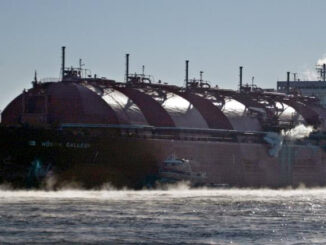
Shipping times vary by the size of the vessel, but large container vessels take approximately 25 days to go from Europe to Asia using the Suez Canal, and 34 days sailing around the Cape of Good Hope.
Approximately 8.2 million barrels per day (bpd) of crude and oil products sailed through the Red Sea between January and November 2023, and, according to S&P Global Commodity Insights, 16.2 million metric tons (MMt), accounting for 51 percent of all LNG trade, has been shipped east through the Suez Canal, while 15.7 MMt was shipped west through the Suez Canal.
The Red Sea is one of the most strategically important trade routes in the world, serving as a direct connection between Europe and Asia and facilitates approximately 12 percent of global trade, including 30 percent of global container traffic. Without the Suez Canal and access to the Red Sea, shipping companies would have to navigate around the Cape of Good Hope adding significant time and cost. The past several weeks have seen an increase in attacks by the Houthis in Yemen on vessels operating in the southern Red Sea and the Gulf of Aden, and many shipping companies have elected to cease operations in the region and opt for the longer route around the tip of Africa. If this trend continues, oil and natural gas prices could rise significantly.
Houthi Attacks and Global Response
The Houthis took control of the capital of Yemen, Sanaa, in 2014 and have since made periodic attacks on commercial vessels operating in the Red Sea near the Yemen coastline. In support of Hamas in the Israel-Hamas war, the Houthis have increased their attacks in the Red Sea, with the desire to prevent Israeli ships from conducting trade in the area. The Houthis are one of many Iranian backed militant groups but make up part of Iran’s “Axis of Resistance,” which includes Hamas in Gaza and Hezbollah in Lebanon. The groups are united in their effort to stand against Israel and the West.
Source: Council on Foreign Relations
In order to regain control of the region, on December 18th, Secretary of Defense Lloyd Austin, announced the creation of a new multinational security initiative designated Operation Prosperity Guardian under the umbrella of Combined Maritime Forces led by Task Force 153, which will focus on bringing greater security in the Red Sea and protecting the free flow of trade. Countries that have joined Operation Prosperity Guardian include the United Kingdom, Bahrain, Canada, France, Italy, Norway, Netherlands, and Spain. This new security initiative seeks to disrupt Houthi attacks in the southern Red Sea and the Gulf of Aden without escalating the conflict any further. If miscalculated, engagement could draw the U.S. and allied nations into a direct conflict with the Houthis who are well armed and entrenched in western Yemen and could embolden greater involvement by Hezbollah in Israel.
Rising Shipping Costs Will Impact Oil and LNG
As a result of the Houthis’ actions in the southern Red Sea, on December 21st, 100 container ships were rerouted around the Cape of Good Hope on the Southern tip of Africa, adding additional time and expense to trade. Shipping times vary by the size of the vessel, but large container vessels take approximately 25 days to go from Europe to Asia using the Suez Canal, and 34 days sailing around the Cape of Good Hope. The image below illustrates the profound difference between each route:
Source: BBC
According to Reuters, the price of shipping a container from East Asia to the Mediterranean has risen by 44 percent throughout the month of December, 2023, and given the resolve of the Houthis to continue their attacks, the cost will likely increase. Furthermore, approximately 8.2 million barrels per day (bpd) of crude and oil products sailed through the Red Sea between January and November 2023, and, according to S&P Global Commodity Insights, 16.2 million metric tons (MMt), accounting for 51 percent of all LNG trade, has been shipped east through the Suez Canal, while 15.7 MMt was shipped west through the Suez Canal. With such a large quantity of global oil and LNG utilizing the Red Sea, if the attacks persist and shipments are forced to use the Cape of Good Hope instead, the extra cost will eventually be paid by consumers.
Conclusion
Recent data shows Brent crude futures have climbed nearly 8 percent over the month of December to over $80 a barrel, currently settled at $75.84. Major shipping companies have already begun changing their routes to avoid the Red Sea, with BP becoming the first oil company to halt their operations in the region and pursue other routes; others may soon choose to follow their lead to avoid unnecessary risk. By doing so, the price of oil and LNG are poised to increase which will eventually lead to higher prices for American consumers. The Houthis have shown no signs of stopping their attacks on vessels sailing near western Yemeni waters, and, as long as they continue to harass ships, more companies will choose to use longer shipping routes which will increase the price of oil and natural gas.



